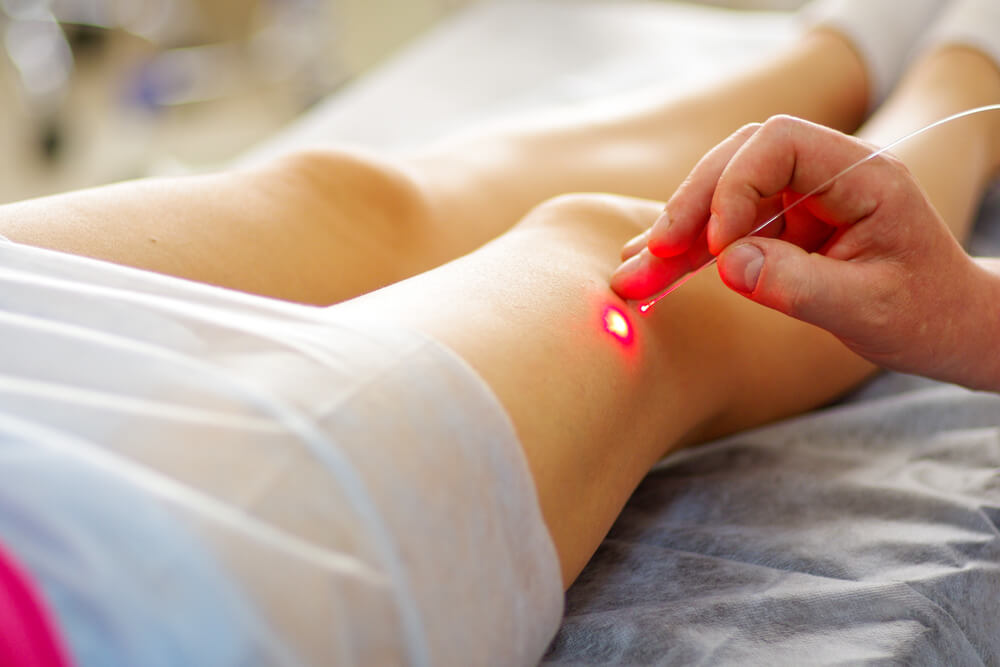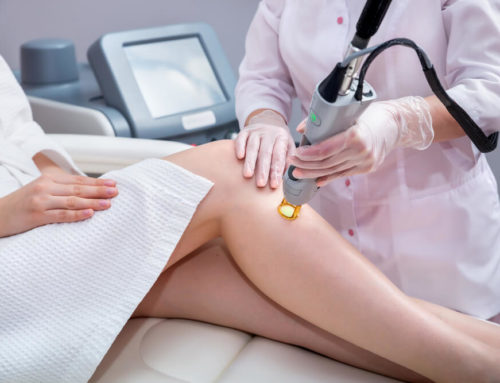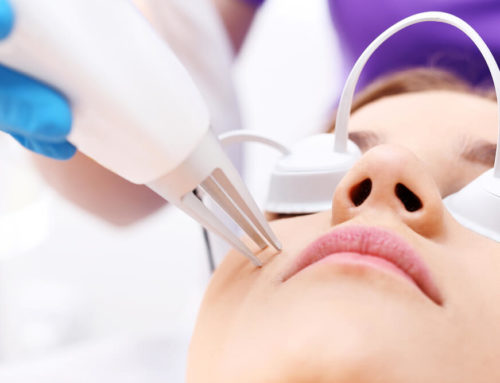Can you see the veins in your legs? Spider veins and varicose veins may simply be something you don’t like the look of, but they could also be a risk for your health. If you can see the veins in your legs, it’s important to understand why, check in with a health care provider to determine what’s happening, and then make decisions concerning how you’ll address the issue.
Today, there are options like laser vein treatment for removing the veins. In this article, you’ll gain an understanding of whether that may be the correct course for you.
Why People Get Spider Veins
While we aren’t sure how many people get spider veins and varicose veins, experts estimate that somewhere between 30% to 60% of people have them. So, what does it mean when your veins are very visible?
A healthy vein travels in one direction. The vein pumps your blood toward your heart. Sometimes, small valves inside a vein will weaken. When this happens, instead of pumping blood toward the heart, some of it slides backward. The blood pools in the vein. This makes the vein bigger, so it bulges as pressure builds on the vein walls. Eventually, this becomes a spider vein or varicose vein when it becomes wide enough to become visible to the eye.
This doesn’t happen to everyone. If you have them, you may wonder why it’s happening to you. Sometimes, it just happens, but there are people who have a higher risk of this developing.
If you noticed your parents had spider veins or varicose veins, it may make you more likely to have them. Often, a hereditary history raises the odds of spider veins developing.
Have you gone through a pregnancy? Varicose veins are a common symptom during pregnancy. During pregnancy, the body’s blood volume increases by 20%. This puts a lot of pressure on the vein walls. Because of this, many women experience hemorrhoids, spider veins, and varicose veins. If you’re experiencing this during pregnancy, point them out to your OB/GYN so they can keep an eye on them for you.
Many people who sit or stand for long periods of their days develop bulging veins. If you work in a field where sitting or standing most of the time is standard, it may put a lot of pressure on your veins.
The development of varicose veins is also more common as people age. Those over 50 years old are more likely to have this condition.
Additionally, spider veins may be more likely after a person experiences hormonal changes. Injury is another common cause. Finally, sunlight can also make spider veins more likely.
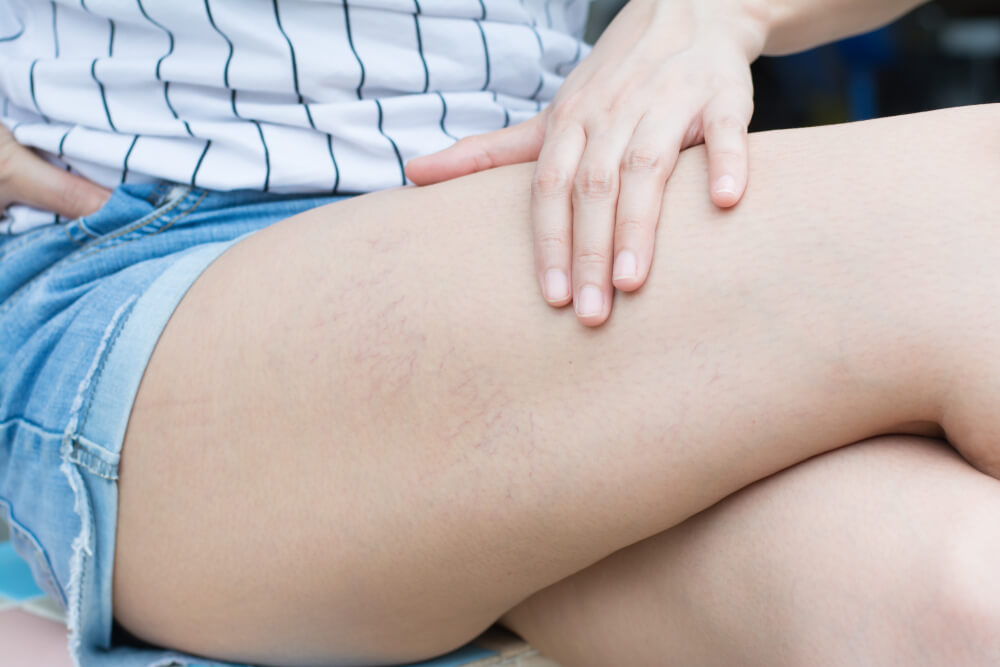
How to Prevent Varicose Veins
While there are self-care tips that can help you prevent visible veins from occurring, there isn’t any way to naturally get rid of these veins at home. For the varicose or spider veins you already have, you’ll need to seek a health care provider for treatment to have them removed.
However, if you already have varicose or spider veins, you’re more likely to have more develop. If you know they run in your family, you may also want to take preventative measures.
So how does someone prevent varicose veins? The key here is to improve your circulation. If your circulation system is healthy and strong, your blood will be pumping toward your heart. This will prevent the blood from slowing down and beginning to travel backward.
The best thing you can do to improve your circulation is to keep a regular exercise routine. This can be as simple as going for walks every day or could include taking a spin class. Whatever you can do consistently to keep your legs moving will help. At the end of a long day, elevating your legs can help improve your blood flow.
If you are sitting for long periods of time at work or otherwise, then you should get up and walk around every 30 minutes or so. Even two minutes of movement can do a world of good for your circulation.
Perhaps you’re standing for long periods of time. If so, you should take a break every 30 minutes if possible.
Soaking in a bath is a good way to relax after a long day. However, doing so for a long period of time can slow your circulation. If you’re trying to prevent spider veins, you’ll want to cut your baths short.
The Types of Laser Spider Vein Removal
For laser therapy, there is both standard laser therapy for vein removal, and then there is endovenous laser therapy (EVLT). Other options for removal that your health care provider may recommend include sclerotherapy and radiofrequency ablation (RFA). While some patients may be able to treat their spider veins with a single treatment method, there are cases where your doctor may recommend you have multiple treatments using a combination of the following methods.
- Sclerotherapy is a treatment for spider veins and small varicose veins. This was the traditional option before laser therapy became more common.
- A standard laser therapy treatment can resolve spider veins or small varicose veins.
- Endovenous laser therapy is a newer type of vein removal treatment. It is an option for spider veins and small varicose veins.
- Radiofrequency ablation is a method for large varicose veins.
What Happens During Laser Vein Removal
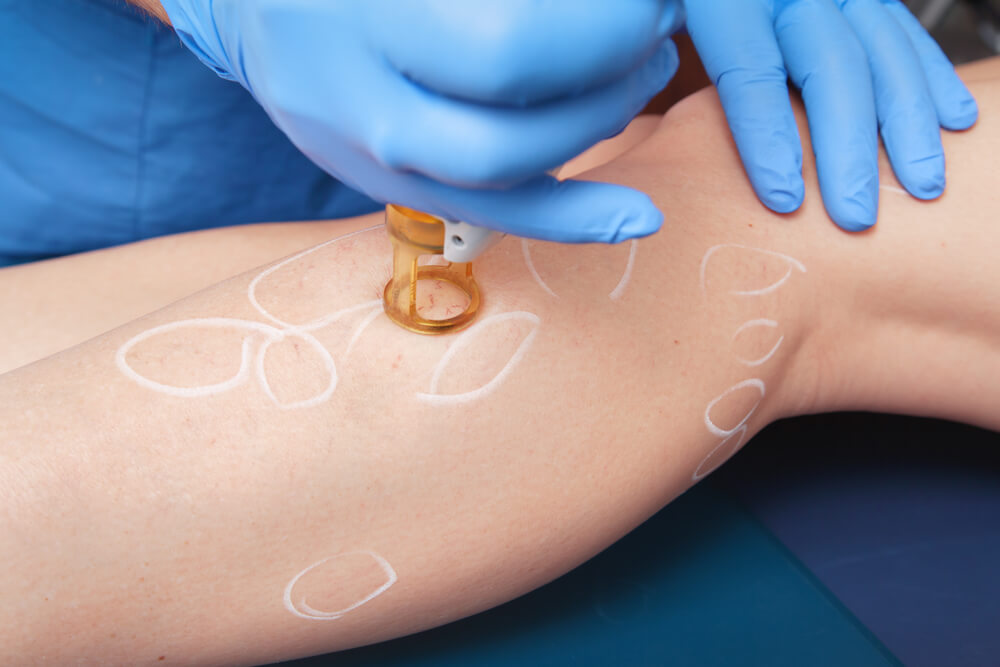
After your initial physical exam appointment, you can schedule an appointment for treatment. During a standard laser therapy treatment for vein removal, your health care provider will use a laser on your skin. This will likely only last for about 15 minutes. While you may want to take the rest of your day off work, you can resume your normal activities the next day following treatment. After your laser therapy treatment, your doctor may have you wear compression socks.
Looking ahead, the severity of your leg vein situation will determine how long it takes for them to become less visible. If you have spider veins, they may disappear immediately. Larger ones can take one to three months. Depending on what your doctor finds during your exam, you may need multiple treatments; in fact, most people do. These treatments can occur six to 12 weeks apart. It is common for there to be a larger feeder vein that may be causing issues with the smaller spider veins. In that situation, you may need to treat the larger vein and then treat your smaller veins.
Your doctor will recommend that you avoid sunlight for four weeks following treatment. This will prevent the development of dark spots on your skin. In the future, avoiding sunlight can help you prevent spider veins.
Endovenous laser therapy is more involved than standard laser therapy. This appointment will begin with local anesthesia. The numbed area will swell up. Your doctor will insert a laser fiber after making a small incision and then heat up the laser. This won’t do anything to the area around the laser, but it will cause the vein to heat up and then collapse.
Afterward, your doctor will ask you to wear a compression stocking. The doctor will observe you for a while, so this appointment will take a bit longer than with standard laser therapy.
Then you’ll be able to go home. Your doctor will instruct you to do a few things to prevent side effects like blood clots. You will need to go for walks every day and wear your compression stockings for a couple of weeks. You may need more than one treatment, and it may take up to a year for the vein to fully disappear.
How to Know If Laser Vein Treatment Is a Good Option
You won’t be able to make this determination for yourself. You will need to have a doctor experienced with laser therapy perform an exam.
This may involve getting a Doppler ultrasound. Your health care provider will also want to ask you questions about your medical history to determine if you’re a good candidate. They’ll determine whether your spider veins or varicose veins are a medical concern for your health or something you’d rather not see on your legs. Then, they’ll be able to discuss what treatment options may be best for your needs moving forward.
There’s no need to live with questions about the visible veins in your legs. To get answers on the health of your veins from an expert, make an appointment with our office.

